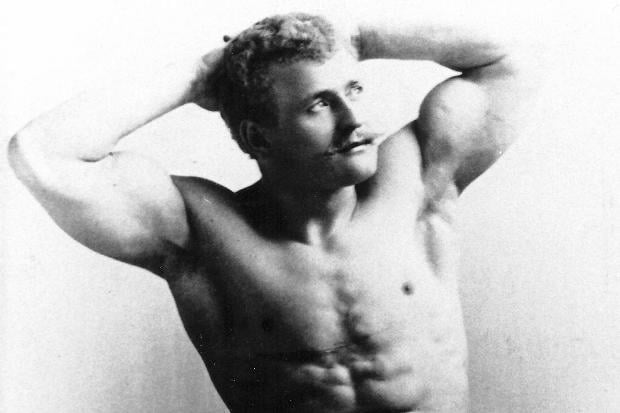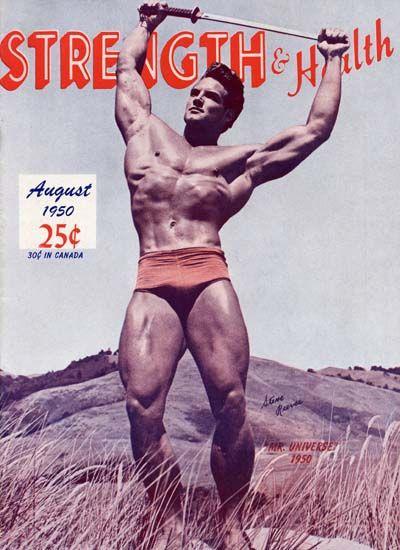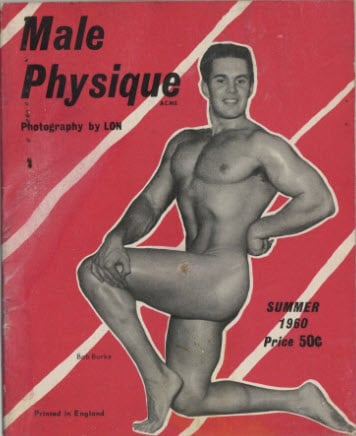Back to the Future – Physique Pictorial in the 1950s
The first issue of Physique Pictorial was a scant 16 pages long (cover to cover), but stimulating nonetheless (at least at the time). Featuring a...
2 min read
Bob Mizer Foundation : Mar 7, 2017 3:03:00 PM

It was a situation all too familiar to his contemporaries in years past. And now, it was happening to him.
 Male physique photographer John Palatinus had seen other artists who dared to display male eroticism under the guise of good health in their photographs end up on the wrong end of a police baton. They had gone to prison for producing and selling their art. And now, as the 1950s came to an end, police were raiding his New York studio after being tipped off by the U.S. Postal Service, whose employees caught Palatinus mailing a photo order to a client.
Male physique photographer John Palatinus had seen other artists who dared to display male eroticism under the guise of good health in their photographs end up on the wrong end of a police baton. They had gone to prison for producing and selling their art. And now, as the 1950s came to an end, police were raiding his New York studio after being tipped off by the U.S. Postal Service, whose employees caught Palatinus mailing a photo order to a client.
The Indiana native and military veteran knew it was bound to happen to him at some point. And after he was arrested and put on trial in the early 1960s (he eventually plead guilty), Palatinus avoided a prison sentence because he had spent a night in jail upon his arrest.
It was an experience that, although familiar to Bob Mizer and his ilk, would shape the rest of Palatinus’ life.
“The arrest and trial were pretty traumatizing for John,” says Dennis Bell, founder and president of the Bob Mizer Foundation. “He stopped shooting male models altogether for several decades after that. If it hadn’t been for a single collector of his work, he may never have experienced a resurgence in the art world.”
 Palatinus had male physique photography collector Alan Harmon to thank for that resurgence. After Palatinus discovered Harmon’s collection of his photos online, the two men corresponded for several years. Eventually, Harmon was able to talk Palatinus into returning to his proverbial roots.
Palatinus had male physique photography collector Alan Harmon to thank for that resurgence. After Palatinus discovered Harmon’s collection of his photos online, the two men corresponded for several years. Eventually, Harmon was able to talk Palatinus into returning to his proverbial roots.
“John started having his work shown in galleries around the world once again,” says Bell, who added that Palatinus turned to more conservative commercial photography for three decades after he appeared in court. “Those who were now exposed to his work will note similarities between his work and that of Mizer. Both men shot models who appeared in posing straps, of course, but even the poses they used were similar – pretty much nonsexual.”
Born only four months before the Stock Market Crash of 1929 plunged the country into the Great Depression, Palatinus was born in rural Indiana, and conducted his first photo shoot at the age of 22 in 1951, the same year that Mizer debuted his magazine, Physique Pictorial. Only three years later, Palatinus moved to New York to continue his work, having served in the Korean Conflict with the U.S. Army Corps of Engineers.
Palatinus’ work began being featured in other male physique publications, such as Tomorrow’s Man, and word quickly spread about his burgeoning talent. Palatinus shot his first nude model in 1958, only a year before his arrest.
 “Mizer and Palatinus both redefined hyper masculinity in their own way,” Bell says. “Though they were indeed similar in that both presented male body perfection throughout their work, Palatinus was known for minimalism in the backgrounds of his photos, while Mizer shone lights on his mother’s glassware to create these beautiful, elaborate shadows for his backgrounds.”
“Mizer and Palatinus both redefined hyper masculinity in their own way,” Bell says. “Though they were indeed similar in that both presented male body perfection throughout their work, Palatinus was known for minimalism in the backgrounds of his photos, while Mizer shone lights on his mother’s glassware to create these beautiful, elaborate shadows for his backgrounds.”
Now, in the early 21st century, artists and art lovers alike could appreciate Palatinus’ work in art galleries the world over. One of his greatest honors in the years following his return to the art world was receiving the Lifetime Achievement Award from the LGBT organization Greater Palm Springs (California) Pride. Proudly, Palatinus referred to his return to male physique photography as his life’s “second act.”
By that time, Palatinus had the distinction of being one of the few surviving original male physique photographers of the 1950s. He died at the age of 85 on Sept. 22, 2014, in Palm Springs.
“In the ‘50s, you had Mizer, you had Bruce of Los Angeles, you had John Palatinus, you had many others,” Bell says. “They all were pioneers in the push to present the male body and male beauty as a thing of desire.”

The first issue of Physique Pictorial was a scant 16 pages long (cover to cover), but stimulating nonetheless (at least at the time). Featuring a...

In exploring the transformation of bodybuilders over the decades, it is fascinating to compare the standards and aesthetics of the mid-1950s to the...

Though Bob Mizer's Physique Pictorial offered a knowing wink to male readers who viewed the models within its pages as much more than just a picture...

In the 1940s and 1950s, there existed a group of men who were both excited and fearful when they made the trek to the mailbox every day.